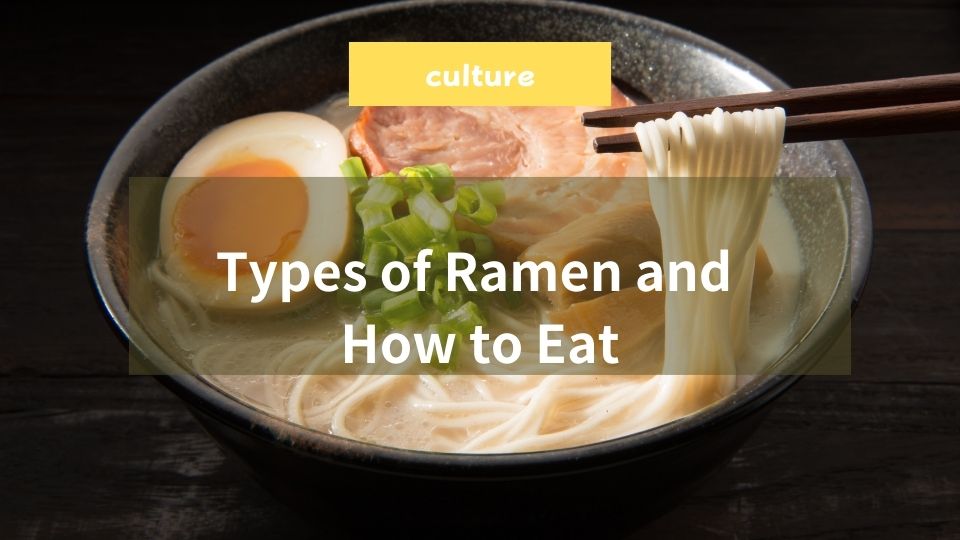Hello, this is the ShimaSuki editorial team.
Ramen is one of the most famous Japanese dishes worldwide. For tourists visiting Japan, tasting authentic ramen can be a special experience. However, there are many different types of ramen, and Japan has its own unique dining etiquette. In this article, we will introduce the various types of ramen found across Japan and the proper way to enjoy them.
Types of Ramen Across Japan
Different regions in Japan have their own distinct styles of ramen, using unique broths, noodles, and toppings. Here are some of the most famous varieties:
1.1. Shoyu Ramen (Tokyo)
This soy sauce-based ramen is one of the most common types in Japan. It features a clear broth with medium-thin noodles, offering a simple yet deep flavor.
1.2. Miso Ramen (Sapporo)
Originating from Sapporo, Hokkaido, miso ramen features a rich miso-based broth. It is often topped with butter and corn, making it a perfect dish for cold winters.
1.3. Shio Ramen (Hakodate)
This light and clear salt-based ramen has a refreshing taste, bringing out the natural flavors of the ingredients.
1.4. Tonkotsu Ramen (Hakata)
Made with a thick and creamy pork bone broth, Hakata-style tonkotsu ramen is known for its rich flavor and thin noodles. A unique feature is the “kaedama” system, allowing customers to order extra noodles.
1.5. Wakayama Ramen (Wakayama)
A combination of soy sauce and pork bone broth, this ramen has a unique umami flavor. It is often enjoyed with “hayazushi,” a type of pressed mackerel sushi.
1.6. Kitakata Ramen (Fukushima)
Characterized by its thick, wavy noodles, Kitakata ramen typically has a light soy sauce broth with a chewy texture.
1.7. Onomichi Ramen (Hiroshima)
This soy sauce-based ramen includes back fat floating in the broth, adding a rich yet balanced taste.
2. Proper Way to Eat Ramen
When eating ramen in Japan, there are some cultural norms and etiquette to be aware of. Here are some key points:
2.1. Slurp Your Noodles
In Japan, it is common to slurp noodles loudly. This helps mix the noodles with the broth and enhances the flavor.
2.2. Taste the Broth First
Ramen broth varies from shop to shop. Take a sip first to appreciate the restaurant’s unique flavor.
2.3. Enjoy the Toppings
Popular toppings include green onions, bamboo shoots, chashu pork, and flavored eggs. Try different combinations to experience new flavors.
2.4. Use the Kaedama System (for Tonkotsu Ramen)
In Hakata-style ramen shops, you can order extra noodles by saying “Kaedama, please!” to the staff.
2.5. Do Not Lift the Bowl
Unlike rice bowls, lifting a ramen bowl to drink the broth is not common. Instead, use a spoon (renge) to enjoy the soup.
2.6. You Don’t Have to Finish the Broth
It’s not necessary to drink all the soup. If you’re full, it’s okay to leave some behind.
3. Tips for Enjoying Ramen
3.1. Be Prepared for Long Lines at Popular Shops
Famous ramen shops often have long lines. To avoid peak hours (12 PM–1 PM, 6 PM–8 PM), visit at off-peak times.
3.2. Understand the Ticket System
Many ramen shops use a ticket vending machine at the entrance. Purchase a ticket for your desired meal and hand it to the staff.
3.3. Customize Your Ramen
Some shops allow you to choose the firmness of your noodles, the richness of the broth, and the amount of oil. Adjust these to match your preference.
3.4. Check for Seasonal Specials
Some ramen shops offer limited-time seasonal ramen. Be sure to check for unique flavors when you visit.
Conclusion
Japanese ramen comes in a variety of regional styles, each with its own distinct flavors and traditions. By understanding the different types and proper way to eat ramen, tourists can fully appreciate this iconic dish. Enjoy exploring Japan’s ramen culture and find your favorite bowl!



